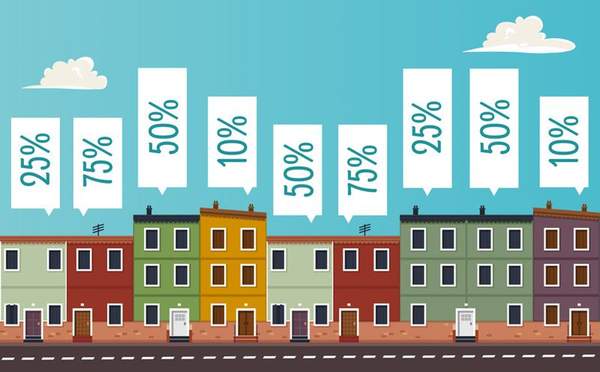As a key driver of the UK economy, property markets feature heavily before and after significant national decisions: general elections, the London mayoral election, the EU referendum. Nearly one month after the Brexit vote, some specks of dust have now settled, and a clearer dialogue on how property trends may change in the future has emerged. We’ve examined four of the most prominent markets to assess the immediate impact of Brexit, market conditions before the vote, and what predictions have been made for the year ahead.
Commercial property
Offices and industrial units outperformed the wider property market in 2015, with total returns of 13.4%. Growth was forecast to drop to just below 9% by December 2015, however, yields had returned to the 2007/2008 peak, and central London offices were set to outperform in 2016 - albeit at a slower rate. London’s commercial sector isn’t without its issues: sky-high rents and high business rates have driven thousands of businesses from their original homes as financial futureproofing overtook the need to remain within a prized, central location.
Pre-existing issues have now been exacerbated following the fall in the pound and a stream of frozen property funding has enveloped the sector – investment in shopping centres, office blocks and warehouses amounting to approximately £14bn have been suspended after Henderson, Columbia Threadneedle and Canada Life recently hung up deals in the pipeline. Others, like Asset Management, have fulfilled pre-Brexit predictions, which stated that significant boosts in the sector could be reversed, by writing down the value of its assets by hundreds of millions of pounds.
Others are defiantly shrugging off Brexit panic: US financial giant, Wells Fargo, snapped up an office block in the City for £300 million this July, while a Union Investment spokesman said that the UK will ‘not go away as a safe haven market’ once the dust has settled. The Bank of England has reassuringly said that there is no rush to cut interest rates for the time being, but there may be a cut in August, leaving British business with a month-long wait for a much-needed post-Brexit boost. Economic forecasts will ultimately decide the fate of the commercial sector and the appeal of London as a business centre. Early free trade negotiations with Australia have provided a spark of hope this month, but businesses know that a short, sharp storm must be weathered, and doom and gloom must subside before international investment regains strength once again.

Student Housing
The UK student housing market is currently providing a refreshing contrast to the widespread negativity expressed within the commercial sector. We discussed in a previous post how the dominance of the US market may have met its match in the growing UK student housing sector, but has this trajectory now changed?
UK universities and the student housing sector have proved remarkably resilient through testing times, however, a continuous decline in the numbers of international students since 2011 has cost the UK £8bn. Immigration restrictions imposed in 2011 led to the fall mentioned, yet campus facility construction has risen by 43% year-on-year to entice global interest. Contracts worth £2bn for planned projects between 2017 and 2020 have swapped hands, and the chronic undersupply of residential housing will continue to play into the hands of private developers seeking high rental yields.
The flip side is that significant hits to the affordability of UK higher education could divert students and investment to other European cities that have existing cultural, academic and business strengths, like Frankfurt, and other students are predicted to travel further afield for an English language experience, to for example, Canada or its expensive neighbour the USA.
British universities are capitalising on higher tuition fees and historic growth to carry out the biggest enlargement programme since the 1960s with award-winning architecture and the latest facilities. UK universities can currently rest on global reputation and an operating surplus, but expansion comes at a price. Spending up until 2018 is likely to exceed £17bn, according to The Higher Education Funding Council for England. As universities operate with fine margins, increased borrowing to improve student recruitment may eventually become unsustainable in the future and a different strategy may need to be adopted.

Buy-to-let
Following what many critics claimed was the ‘slow death of buy-to-let’ earlier this year after yet another stamp duty surcharge hike of 3%, banks and building societies have now decided to curb lending after a last-minute scramble to appeal to stalling landlords with bumped up lending and slashed rates. According to the Bank of England, buy-to-let investment loans totalled £13.5bn between January and March as prospective landlords rushed to beat the hike, however, dramatic cooling in the market is now a widespread presumption.
Mark Carney has warned that there is ‘no silver bullet’ for preventing an economic downturn despite moves to balance the financial books and a likely interest rate cut in August. Some early predictions after the vote stated that property values and rents would drop after a Brexit vote because buyers and sellers would simply sit tight and assess the unfolding situation in the second half of 2016.
Straight-talking landlords like Fergus Wilson are hopeful that a potential point-based immigration system will improve the quality of tenants, and that cheaper buy-to-let property worth less than £500,000 won’t be affected too much as “the prices don't have as far to fall.” The demise of landlord Angela Leadsom as potential Prime Minister administered an early blow to hopes of policy change in the sector, but individuals may take comfort from news of a potential drop in corporation tax to entice investors, a fall in house prices and an underlying shortage of housing to maintain demand.
The prime trend in buy-to-let this year has been turbulence, with instability and hits taking a toll after April. This trend is likely to continue, but perhaps without the activity frenzies that occurred in May last year and the first quarter of 2016.

Residential
Before the June vote, hedge funds placed multi-million-pound bets on the collapse of the prime housing market in London, despite the significant increase in the number of built or planned prime developments. As always, it’s a game of numbers in the residential markets. Recent reports by The Guardian and the Telegraph suggest that Brexit could cut London property prices by 30%, while the prices of luxury London homes could be slashed by up to 50%.
UK property prices have in fact dropped by 0.9% across the country since June, a month which experienced a 40% sales increased in London in the face of Brexit fears. Headlines such as ‘Buy, sell or stick’ have been a prominent feature in the media within the past month. Future price growth remains speculative as uncertainty continues to plague the markets, but some groups, like KPMG, have predicted a fall of 5% in the next 12 months.
One group that may have a few reasons to smile are first-time buyers. Price drops and possible reduced mortgage rates could amalgamate to create the perfect step ladder onto the property market, however, hits to construction shares and UK housing supply may drive lenders to develop tighter mortgage conditions, such as stricter loan-to-value requirements.
For now, the UK has avoided a devastating recession and significant house price crash, with GDP expected to slow to around 0.6% in 2017. Immediate shocks will subside and house price growth will neutralise to around 1% next year, then pick up again in 2018 with an average rate of 5 to 6%, according to PwC UK – the future may be a bit brighter than first envisaged.
Double-digit property price growth in London may now be a thing of the past, but overall success will hinge on several factors: international interest, policies forged over the coming years with the EU, investor and consumer confidence, and stability in the financial sector.
Stay up-to-date with the latest property insights, market analysis and networking opportunities in the industry by following us on Twitter and LinkedIn.